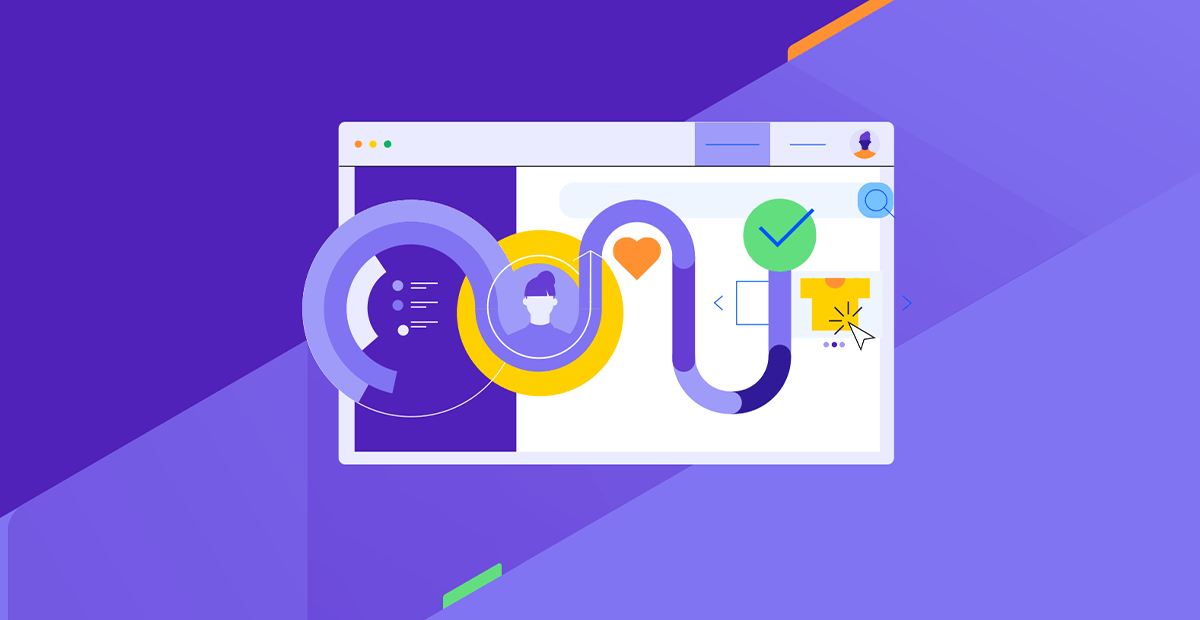How Accessibility Can Improve Your Reach: The Case of Situational Disabilities

Have you ever dealt with a broken arm? What about juggling a bag of groceries while replying to a text message? Situational disabilities affect all of us. Accessible design really does increase digital reach.
As a business owner or a product manager, you have a good idea about who your target customers and users are. Perhaps your typical audience doesn’t reach many people with disabilities. But have you considered that a vast number of online users experience a temporary or situational disability at any given time?
According to World Health Organization, around 1.3 billion people around the world live with significant disability—or 1 in 6 people globally. But did you know that even more people experience temporary and situational disabilities due to the circumstances or environment they are in? These non-permanent disabilities change the way people interact with digital products and services. Providing accessible products can make or break the user experience for all those people, so adopting a new understanding about disabilities in order to unlock your business’ hidden potential can help you cater to a larger audience.
With the increasing adoption of digital services and solutions in our everyday lives, web accessibility has emerged as a critical issue—not just for individuals with disabilities, but for everyone who engages with online content.
Many organizations are reluctant to invest resources in providing web accessibility because they believe their users don’t need accessible products or services. However, the notion that web accessibility is solely for a specific subset of users is a misconception. The user experience is similarly impacted for someone with permanent inability to use one of their hands and for another person who is temporarily using only one hand because they are holding their coffee. If the product team has not factored in accessibility during the design and development phase, the product will not be usable for either group.
A Different Point of View About Disability
Disability is not always visible or permanent; it encompasses a diverse array of conditions ranging from physical impairments to cognitive challenges. According to the Web Content Accessibility Guidelines (WCAG) principles of web accessibility, all content should be perceivable, operable, understandable and robust to cater to the large audience of users and help them interact fully with online content.
In general, there are three types of disabilities depending on the environment and circumstances the users find themselves in:
Permanent Disabilities
Permanent disabilities are conditions such as blindness, deafness or mobility impairments that persist over time and significantly impact how individuals interact with digital content. For example, a person who cannot permanently use one of their arms or hands will always interact with any hardware and software using one hand only or a voice-controlled assistant, if available.
Temporary Disabilities
Impairments that arise from injuries and illnesses and affect users’ ability to engage with digital interfaces for a certain period are temporary disabilities. A person with a broken arm will also use one hand only or a voice assistant, but only for a limited time until their injury heals.
Situational Disabilities
The most relatable disabilities are situational. We often don’t consider them to be disabilities, mainly because we can experience them on multiple occasions every day. Situational disabilities refer to barriers that arise due to environmental or situational factors. For instance, if a person is outside walking their dog on a leash in a busy public park while trying to listen to a voice message, they are experiencing several situational disabilities at the same time. It seems like an exaggerated example, but in reality there are numerous situations in which accessible websites and apps will make our lives much easier.
The Significance of Web Accessibility
Creating accessible websites and web applications enhances usability for all individuals and accommodates a larger user audience. Here are several reasons why web accessibility is crucial:
Enhanced User Experience
Accessible design principles prioritize clarity, consistency and simplicity, improving usability for all users. Clear navigation, descriptive headings and intuitive controls benefit everyone, regardless of their abilities. In addition, all these elements constitute some of the best practices in UX design, and they are common sense to ideate, design and implement.
Expanded Audience Reach
By ensuring compatibility with assistive technologies and adhering to accessibility standards, businesses can reach a broader audience. An inclusive approach enables individuals with disabilities to engage with content more seamlessly, fostering inclusivity and diversity. Adopting web accessibility best practices helps your product rank higher in search engine results and your content get more impressions on social media. For example, closed captions and subtitles let you understand video content without listening to the sound, making it more likely for the user to engage with it in a broader range of situations and environments.
Legal Compliance
Many countries have enacted laws mandating web accessibility standards to ensure equal access to digital content. Compliance with these regulations not only mitigates legal risks but also demonstrates a commitment to social responsibility and inclusivity.
The Americans with Disabilities Act features requirements about web content and has been in power since 1996. There have been many a great number of lawsuits against large and small businesses filed by frustrated users who faced accessibility problems with websites and apps or by associations that represent them.
A similar piece of legislation, the European Accessibility Act, will be implemented in the European Union to level the playing field for the 135 million people in the member countries.
Improved SEO Performance
Accessibility features such as descriptive alt text for images and semantic HTML markup not only aid users with disabilities but also contribute to better search engine rankings. Search engines prioritize accessible and well-structured content, improving discoverability for all users.
Making web content understandable is one of the main principles of web accessibility. It can equally help users with cognitive impairments or those who read in a foreign language or are distracted by their environment while reading.
Positive Brand Image
Businesses prioritizing accessibility send a powerful message of inclusivity, empathy and respect for diversity. Such initiatives can enhance brand reputation, foster customer loyalty and attract socially conscious consumers. At the end of the day, businesses need as many advocates as possible, and word of mouth is one of the easiest ways to get more loyal customers.
Benefits for Businesses
Investing in web accessibility yields tangible benefits for businesses beyond mere compliance requirements. Here are some compelling reasons why companies should prioritize accessible experiences:
Increased Market Share
By catering to the diverse needs of users, businesses can tap into new market segments and gain a competitive edge. Accessible design fosters customer loyalty and encourages word-of-mouth referrals, leading to increased market share and revenue growth.
Reduced Risk of Litigation
Non-compliance with accessibility standards can expose businesses to legal risks, including lawsuits and regulatory penalties. By proactively addressing accessibility concerns, companies can mitigate legal risks and safeguard their reputation.
Enhanced User Engagement
Accessible websites and applications are more user-friendly and engaging, resulting in higher conversion rates and customer satisfaction. A positive user experience fosters repeat business and strengthens brand loyalty over time.
Improved Innovation and Creativity
Embracing accessibility challenges encourages innovation and creativity in design and development processes. By prioritizing inclusivity, businesses can uncover new opportunities for innovation and differentiation in the market.
Access to Global Markets
In an interconnected world, accessible design enables businesses to reach international audiences and adapt to diverse cultural norms and preferences. By removing barriers to access, companies can expand their global footprint and unlock new growth opportunities.
Prioritize Web Accessibility in Your Product Development Process
Web accessibility is not merely a legal requirement or a moral obligation. It is a fundamental principle of inclusive design that benefits everyone. By understanding the diverse needs of users and embracing accessibility best practices, businesses can create digital experiences that empower individuals of all abilities.
From enhancing usability and expanding audience reach to fostering brand loyalty and driving business growth, the benefits of web accessibility are manifold. In a digital age where inclusivity matters more than ever, investing in accessible design is not just the right thing to do—it’s also smart business practice. By embracing accessibility, businesses can build a more equitable and inclusive online ecosystem where everyone can participate and thrive.
FAQs
Why should businesses prioritize web accessibility if their target audience doesn’t seem to include users with disabilities?
Disability can be permanent, temporary or situational, and inclusive design principles enhance usability for all individuals. For instance, a person with a broken arm temporarily experiences a disability that affects their ability to engage with digital interfaces. By prioritizing accessibility, businesses ensure that their products are usable by a broader audience, leading to enhanced user experience, increased market reach and improved brand reputation.
How do situational disabilities impact user interaction with digital content, and why should businesses consider them in their design and development processes?
Situational disabilities refer to barriers that arise due to environmental or situational factors, such as multitasking or environmental distractions. While these disabilities may seem transient, they affect users’ ability to interact with digital content effectively. By creating accessible websites and applications, businesses accommodate situational disabilities, improving user engagement and satisfaction in various contexts.
Besides legal compliance, what are the other benefits of investing in web accessibility for businesses?
Accessible design enhances user engagement, fosters brand loyalty and drives business growth by tapping into new market segments. Moreover, accessible websites and applications rank higher in search engine results, leading to increased discoverability and improved SEO performance. By prioritizing inclusivity and accessibility, businesses foster innovation, creativity and access to global markets, positioning themselves for long-term success and sustainability.
How can businesses integrate web accessibility into their product development processes effectively?
Businesses can integrate web accessibility into their product development processes by adopting inclusive design principles and adhering to accessibility standards, such as the WCAG. This involves conducting usability testing with diverse user groups, including individuals with disabilities, to identify and address accessibility barriers. By prioritizing web accessibility from the outset, businesses can create digital experiences that empower individuals of all abilities and foster inclusivity and diversity online.
The information provided on this blog does not, and is not intended to, constitute legal advice. Any reader who needs legal advice should contact their counsel to obtain advice with respect to any particular legal matter. No reader, user or browser of this content should act or refrain from acting on the basis of information herein without first seeking legal advice from counsel in their relevant jurisdiction.

Yana Vasileva
Yana is a user experience designer with a background in product research and marketing working at Resolute Software. She is an advocate for human-centered, lean and accessible design. Her passion is making B2B software better by exploring the end users’ needs, goals and pain points. An avid learner in the rapidly evolving field of experience design, she loves introducing new methodologies for understanding the goals of the users and the businesses in the product design process.
Next:
Comments
Topics
Sitefinity Training and Certification Now Available.
Let our experts teach you how to use Sitefinity's best-in-class features to deliver compelling digital experiences.
Learn MoreMore From Progress
Latest Stories
in Your Inbox
Subscribe to get all the news, info and tutorials you need to build better business apps and sites

